Carbon copies for duplicating documents in the past
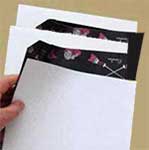
Before the age of computers, photocopiers and scanners, office staff still had to produce copies of documents. The general public, too, often needed to make copies of handwritten letters or drawings. The only ways available to them were much inferior to what we use today. Particularly widespread was the use of what was known as carbon paper or carbon copy paper which produced copies known as carbon copies. This page is about the author's experiences with carbon paper and carbon copies back in the 1950s and 60s, including its advantages and disadvantages for document duplication. The page is not about the main use today which is for tracing and craft.
____
By the webmaster, based personal experience in the 1950s and additional research
What carbon paper is
Carbon paper is thin paper coated on one side with a layer of black generally known as carbon. In fact it could have been dried ink or other pigment bound with wax. It was always black in the early days, although in later years, outside the scope of this page, other colours became available. Whatever it was, the name 'carbon paper' stuck.
Today's carbon paper is produced differently from the old sort to make it much cleaner. The carbon paper which I used to know was dreadfully messy. The coating was black and dirty and we had to be careful not to touch it against our hands or clothes.
How carbon paper was used
People making copies had to start by putting the carbon paper coating side down between the sheet of paper that they would be typing, writing or drawing onto and the paper which was to be the copy. Then the top sheet of the 'sandwich' was either used directly for writing on or drawing or rolled between typewriter rollers ready for typing.
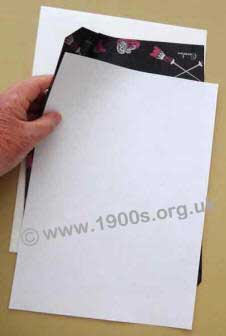
A 'sandwich' of carbon paper between two sheets of paper
The pressure of the pen or the banging of the typist's typewriter keys pressed through the top sheet onto the coating of the carbon paper and causing an imprint to be transferred onto the paper under the carbon paper.
For writing or drawing, the pen had to be a hard pencil or ball-point to get enough pressure through the carbon paper. I understand that today, special metal stylises are available for tracing.
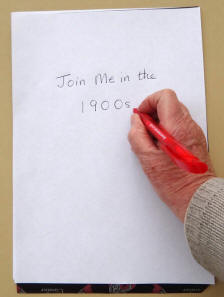
Making a carbon copy by writing on the top copy of the 'sandwich'
There were also what were known as duplicate receipt books which were books of double sheets of paper with carbon paper between. In my early career, I had to use a duplicate book with a ball point pen for handwriting students' reports.
How to make more than one copy
A double 'sandwich' of paper/carbon paper/paper/carbon paper/paper was used to produced two copies. Similarly a triple 'sandwich' could produce three copies and so on. The top sheet of typed paper was known as the 'top copy' even though it wasn't actually a copy, the next sheet the 'first copy' and the next the 'second copy', etc.
'Flimsy' paper or 'flimsies' for more than one copy
In order to get as many copies as possible from a single typing, the sheets of paper for copying had to be thinner than the top sheet in order for the banging of the keys to be transmitted as forcefully as possible. So the copies were normally made on special thin paper, sold as a 'flimsies'.
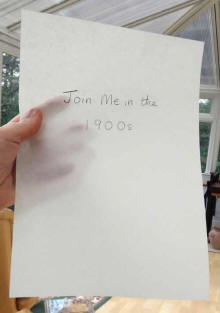
A sheet of 'flimsy' paper held to the light to show how thin it was
As a child and a teenager, I used flimsies as tracing paper for drawings because it was so thin as to be almost transparent. It was cheaper than actual tracing paper.
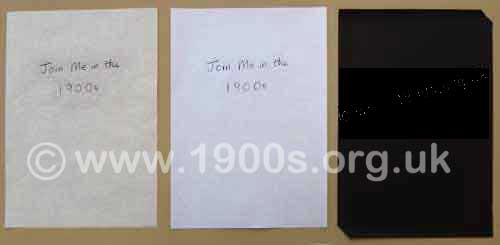
Left to right: a flimsy copy, original on regular paper and a sheet of carbon paper.
The carbon paper shown here is longer than the other sheets because it is for the old foolscap paper. The other sheets would have been foolscap too in the mid-20th century, but A4 is all I have now for these illustrations. The carbon paper is actually slightly shorter than foolscap because it wasn't normal or easy to type or draw in the top and bottom margins.
Legibility
As previously mentioned, the term 'top copy' referred to the original, even though it wasn't actually a copy.
The first true copy was referred to as the first copy. It was usually completely legible, provided that the carbon paper was fairly new, but the quality certainly deteriorated as the number of copies increased. Naturally, when several copies were required, typists tried to work with as large a 'sandwich' as possible, so that they didn't have to repeat their typing. Then, the last few copies often left much to be desired as they were hardly legible.
I was a young adult in meetings where carbon copies were distributed and I couldn't help noticing that there was a pecking order or hierarchy for who got the best and worst copies.
Unauthorised viewing of documents which had been copied
Detectives in old films were in their element!
The coating on unused carbon paper was shiny, but where it left imprints on paper, it was matt. Viewed from the coating side, these imprints were mirror images of what had been typed. So it was perfectly possible to look at used carbon paper in a mirror and read what had been typed.
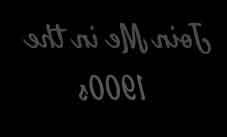
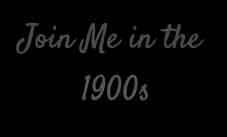
Left: mockup of the underside of a used sheet of carbon paper. Right: mockup of the same used carbon paper viewed in a mirror, showing how it becomes legible.
After a number of uses, though, the letters were so jumbled together that it would have been a very difficult task to decipher them.
How carbon paper was sold
For 100 or so sheets, carbon paper was sold in a thinnish box and for smaller numbers in a protective wallet. Even used sheets were kept in the box or wallet until needed again, in order to keep them crease free and prevent their dirt from spreading.

A pack of foolscap carbon papers in a protective wallet
Advantages and disadvantages of carbon copies
As technology advanced, the disadvantages of carbon copies became all too clear. It was dirty work to produce them, they could only be produced at the time of the typing or drawing and were no use at all for copying finished documents, only a few copies could be produced at any one typing session and their quality seriously degraded with quantity.
In their heyday, though, they were valued because carbon paper was cheap and readily available to individuals as well as large organisations. It should be mentioned, though, that large organisations would have been able to afford machines known as spirit duplicators. Their copies, though, left much to be desired by today's standards as explained on the page about the Banda spirit duplicator.
| sources | webmaster | contact |
Text and images are copyright
If you can add anything to this page or provide a photo, please contact me.



